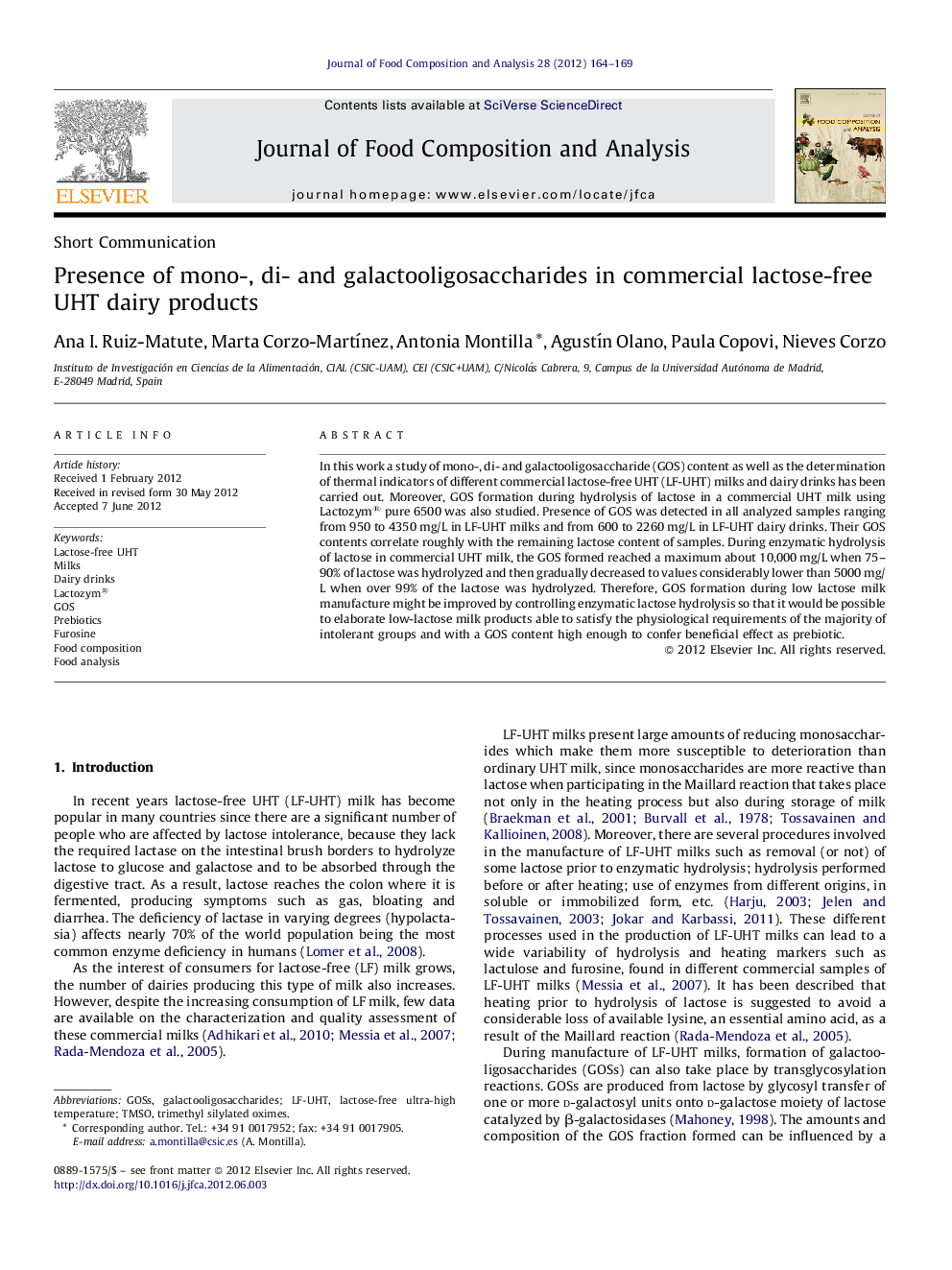| Article ID | Journal | Published Year | Pages | File Type |
|---|---|---|---|---|
| 1218432 | Journal of Food Composition and Analysis | 2012 | 6 Pages |
In this work a study of mono-, di- and galactooligosaccharide (GOS) content as well as the determination of thermal indicators of different commercial lactose-free UHT (LF-UHT) milks and dairy drinks has been carried out. Moreover, GOS formation during hydrolysis of lactose in a commercial UHT milk using Lactozym® pure 6500 was also studied. Presence of GOS was detected in all analyzed samples ranging from 950 to 4350 mg/L in LF-UHT milks and from 600 to 2260 mg/L in LF-UHT dairy drinks. Their GOS contents correlate roughly with the remaining lactose content of samples. During enzymatic hydrolysis of lactose in commercial UHT milk, the GOS formed reached a maximum about 10,000 mg/L when 75–90% of lactose was hydrolyzed and then gradually decreased to values considerably lower than 5000 mg/L when over 99% of the lactose was hydrolyzed. Therefore, GOS formation during low lactose milk manufacture might be improved by controlling enzymatic lactose hydrolysis so that it would be possible to elaborate low-lactose milk products able to satisfy the physiological requirements of the majority of intolerant groups and with a GOS content high enough to confer beneficial effect as prebiotic.
► Lactulose was not detected in any of analyzed samples. ► High furosine content indicates that lactose hydrolysis took place before UHT process. ► GOSs were detected in all commercial lactose-free UHT dairy products analyzed. ► In low lactose milk GOS formation may be improved controlling lactose hydrolysis.
